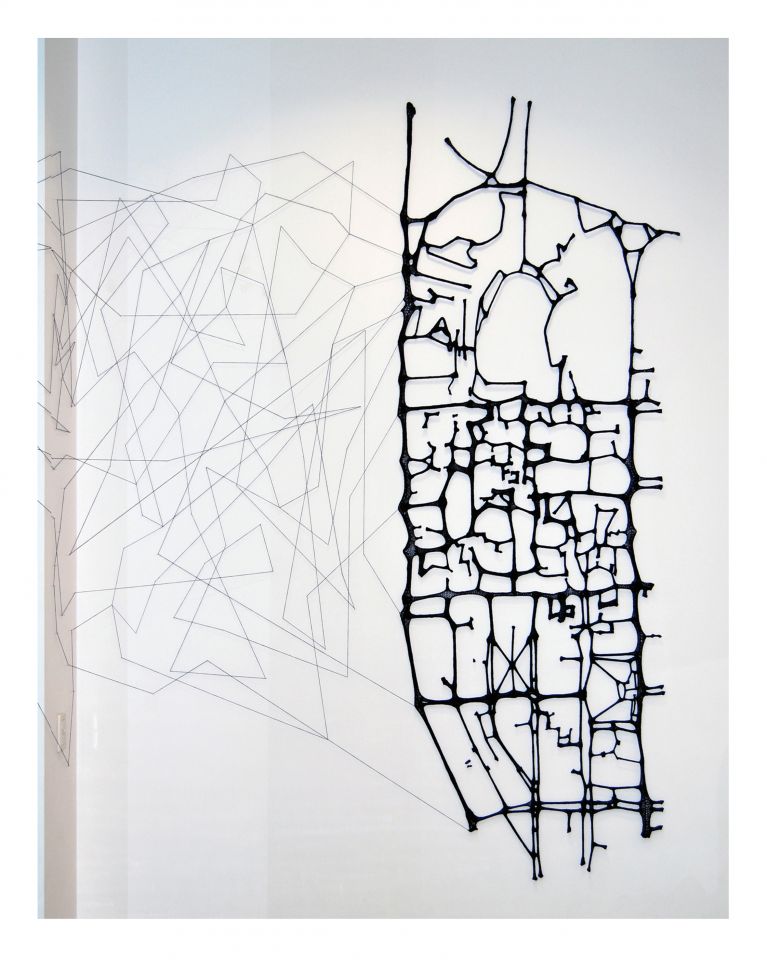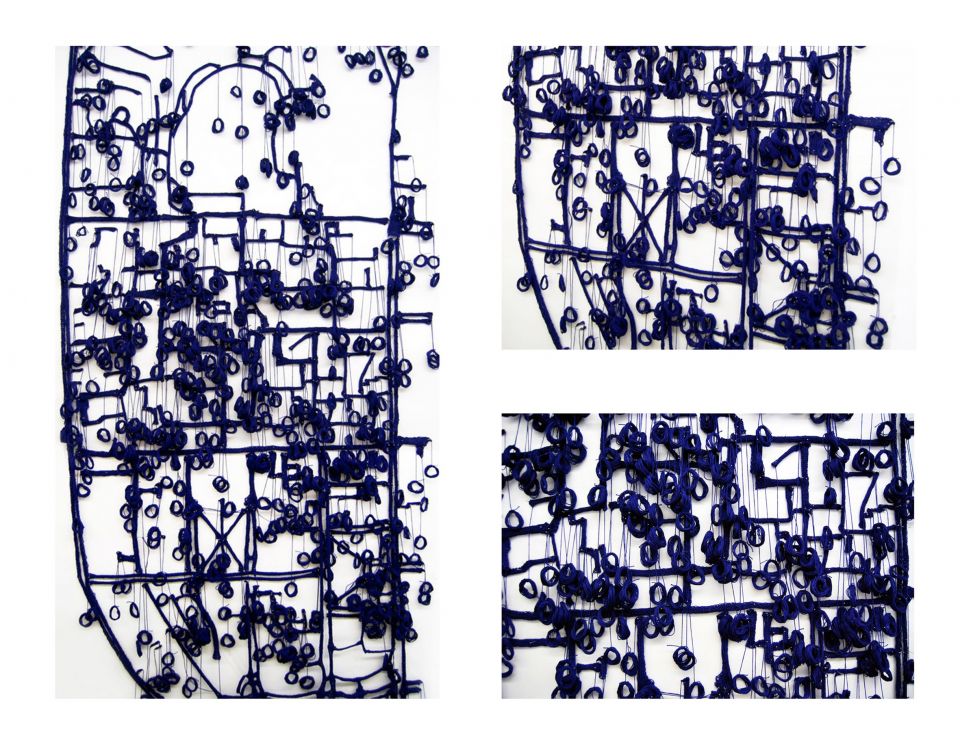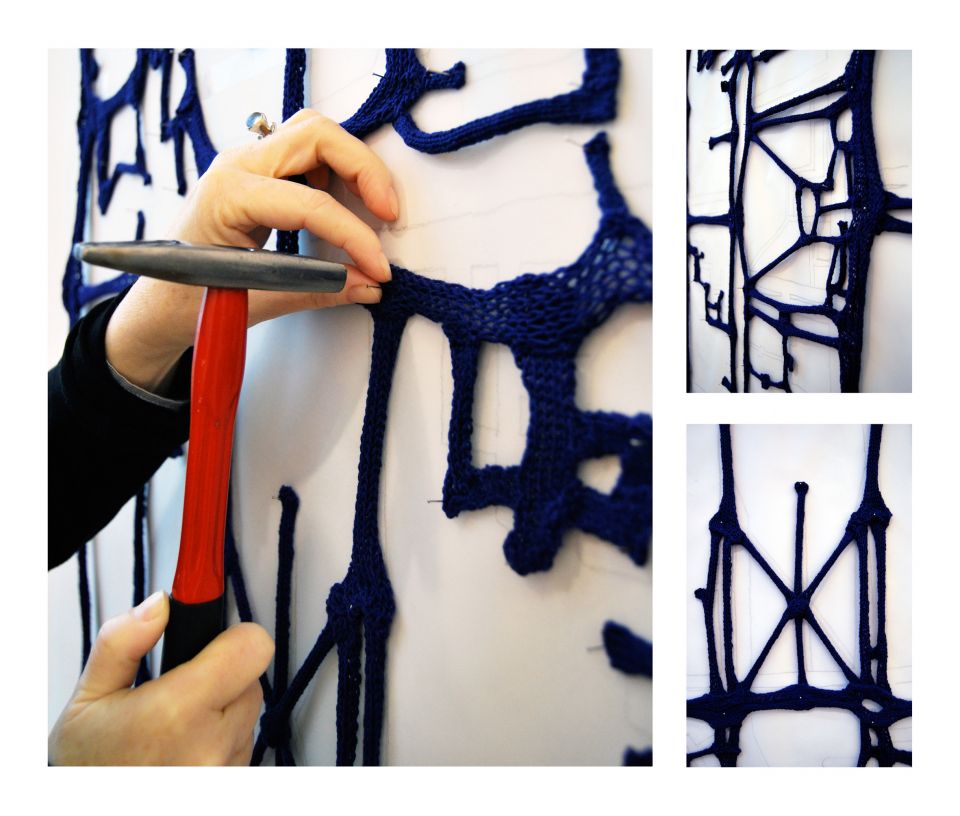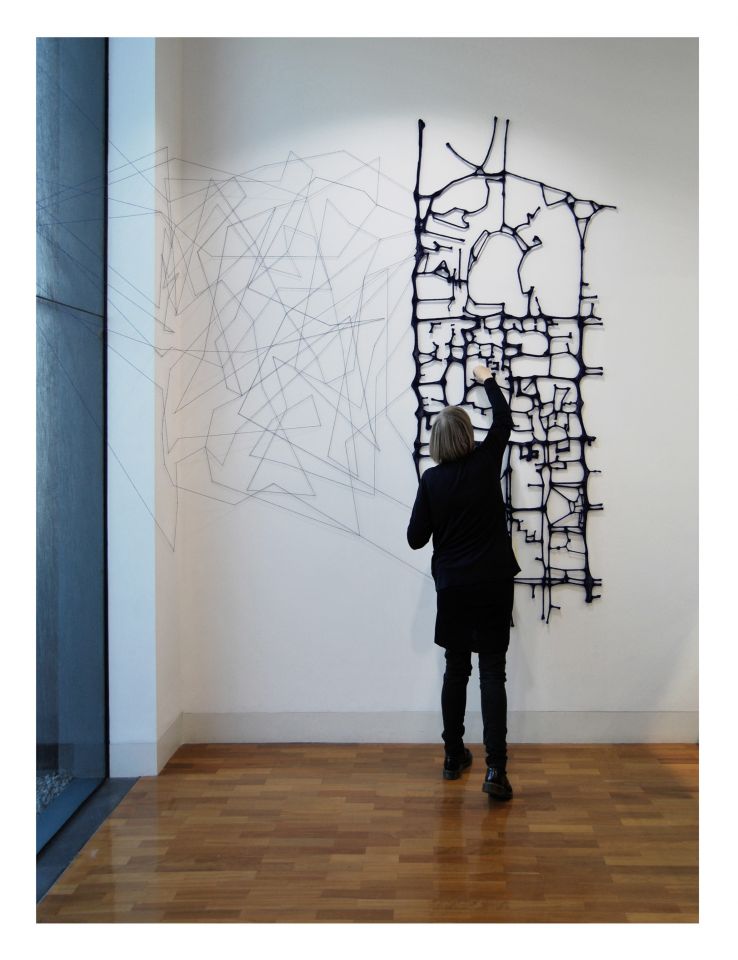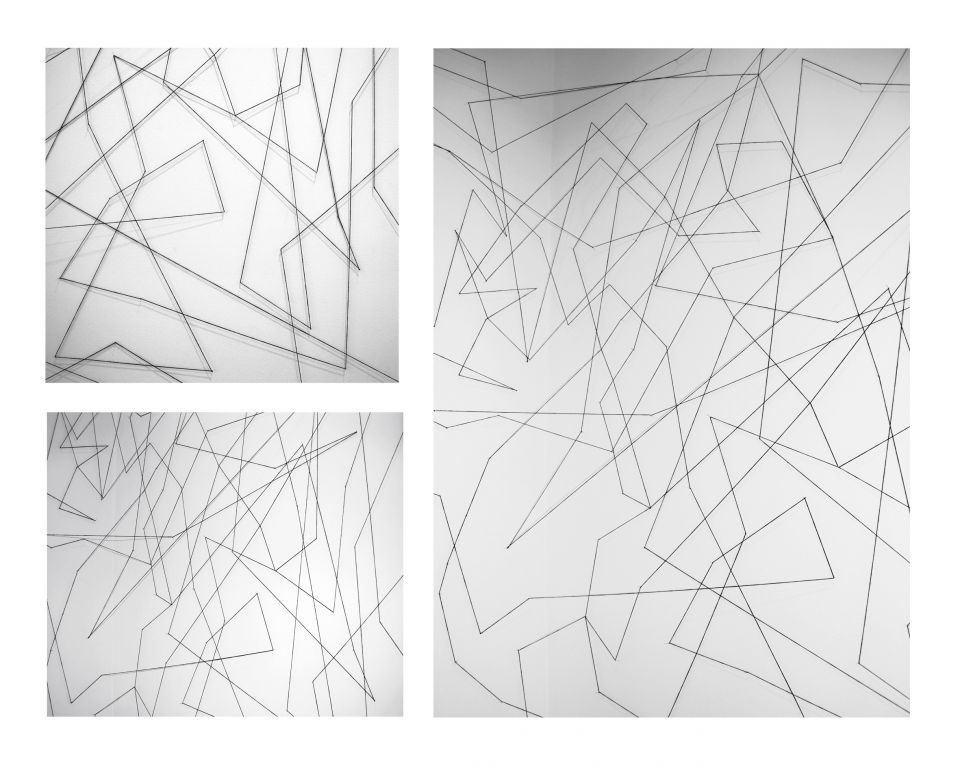projects
More love hours: Contemporary artists and craft
Curated by Suzette Wearne
The Ian Potter Museum of Art, University of Melbourne
22nd July - 11th October 2015
you are here 2014-2015
hand knitted cotton
various dimensions
More love hours: Contemporary artists and craft
Curated by Suzette Wearne
While there is no immutable formulation of the difference between ‘craft’ and ‘art’, certain distinctions are ingrained in the popular imagination. Craft is associated with expert knowledge of process and technique and with tradition and replication. By contrast, art is thought to be ungoverned by rules, and the outcome of individual expression, innovation and ideas. The art world is perceived as a frontier of intellectual concerns, where workmanship and technical skill are frequently dispensed with, outranked by conceptual sophistication. Craft on the other hand is seen as a collection of largely manual activities and the craftsperson’s interests, irrespective of medium, exclusively physical and material.
In contemporary creative practice, these preconceptions are difficult to defend. Artists frequently experiment in disciplines once reserved for the hobbyist, and craftspeople use their chosen medium to explore personal, social and even political themes. The twenty‐first century has been described as a ‘post-disciplinary’ age, characterized by unprecedented lateral movement between fields such as ceramics, painting, textiles, film and performance. As a result of the increased complexity of creative practice, it is perhaps less fruitful than ever to attempt to differentiate works of art from objects of craft.
In 1987, influential American artist Mike Kelley brought objects from the supposedly inferior realm of craft into the fine art world in a provocative assemblage—‘More love hours than can ever be repaid’. This exhibition brings together a group of Australian artists who, despite diverse backgrounds and motivations, share an abiding interest in craft. Some demonstrate their investment through exemplary technical skill, while others reveal an intuitive approach to materials and making- a determination to ‘do it their own way’. In More love hours, their practices coalesce to reveal the great extent to which craft and art overlap, and how this happy confusion of categories has enriched the contemporary visual arts.
you are here
Text by Suzette Wearne
The prominence of craft in creative practice over recent decades has been interpreted by some as a reaction to the suppression of the ‘skilled hand’ that twentieth century artistic movements such as conceptualism, minimalism and even abstract expressionism, are seen to have caused. Modernity gave birth to the workshop system of art production and the digital revolution of the 1990s to the predominance of the new media and the digital aesthetic, all of which had a devaluing and marginalizing effect upon craft and artisanal practice. In recent times, however, an increasing number of artists have been engaging in modes of creativity that are associated with technical skill and meticulous aesthetic realization, appropriating craft materials and methods to conceptual ends.
This hand-knitted installation is a major new work by Melbourne-based artist dana harris. The outcome of a six-month period of repetitive, exacting and unassisted manual labor, you are here fabricates the pathways of the site on which it is located, the University of Melbourne’s Parkville campus. harris chose the unlikely medium of embroidery cotton for this complex three dimensional ‘drawing’, using her expert knowledge of the properties and behavior of textiles, to push her medium to its outermost limits.
harris’s multi-dimensional work is intended to be experienced from infinite vantage points throughout the museum. you are here not only examines relationships between person and place- inviting audiences to look at the Museum, and the wider location of the University anew- but also creates them, and depends on the viewer’s visual appraisal for its full conceptual realization.
you are here is a large, site specific installation of a hand knitted map of the pathways of the Parkville campus of Melbourne University. This installation reduced the site of the campus to a line drawing, marking all the transits that although used daily, are often unexamined. There was no hierarchy, no description of the architecture, or of the faculties, all of these details were deleted in the work, instead it focused and revealed the interconnections within the site and its parameters. Exhibited on the third level of the Ian Potter Museum of Art, it connected with a wall drawing which spanned across the 3 storey atrium of the Museum. Viewers became part of the work, their presence was central to the landscape, and their movement within the space of the Museum was also considered integral within the work.
